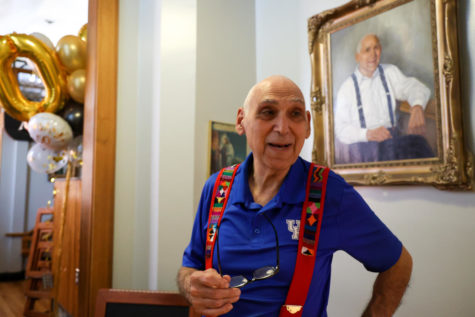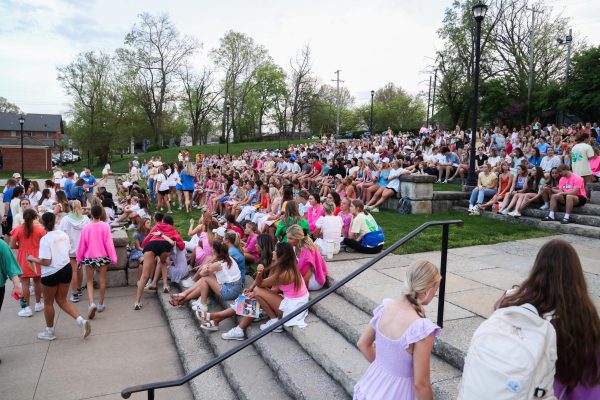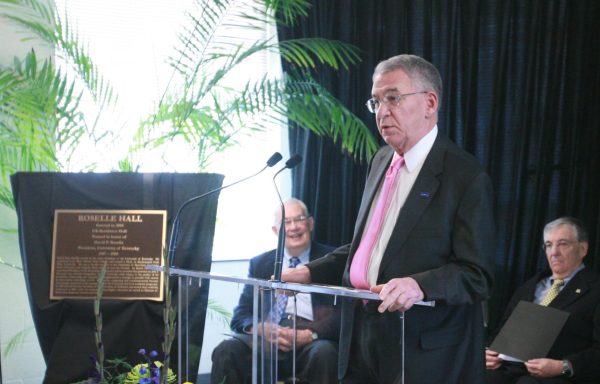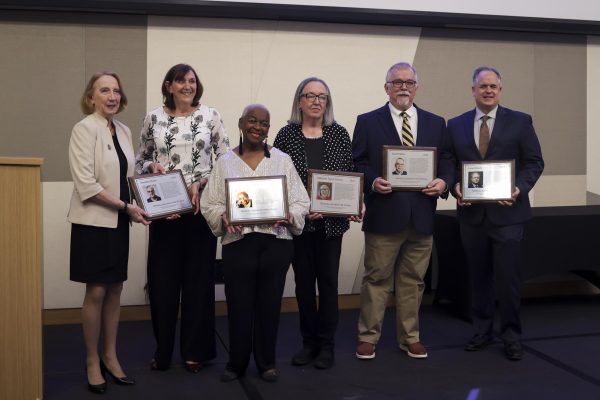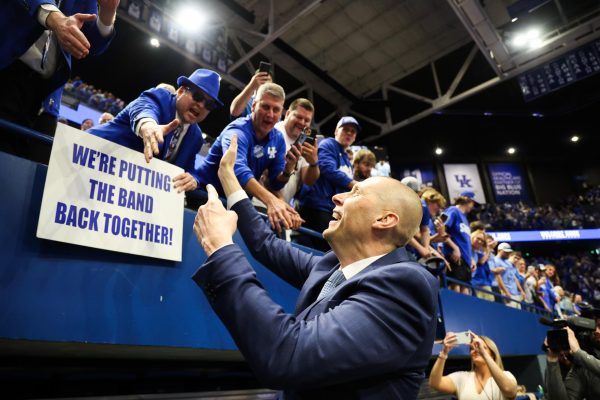Students learn from formerly-homeless
November 17, 2015
By Joshua Qualls
In an attempt to bridge the gap between those of good fortune and those without, a few local “Faces of Homelessness” were featured in a National Hunger and Homelessness Awareness Week panel discussion Monday night.
UK Center for Community Outreach National Hunger and Homelessness Awareness Week Director Adam Douglas brought Josh Nadzam, a Lexington Housing Authority social worker who graduated from UK in 2011, and a couple of his formerly-homeless friends to share their experiences with students in room 203 of The 90.
The panel quickly transformed into a round table conversation. It gave the speakers and audience members the chance to look each other in the eye and speak candidly about the difficult subject matter.
Having spent 240 hours getting to know homeless people at the Catholic Action Center while he was doing an internship as a student at UK, Nadzam decided he was going to try and do something about it.
“It just tore my heart (knowing) people had to live like that,” Nadzam said. “The issue of homelessness is overwhelming.”
Nadzam and his friend Casey Yohe stitched themselves into the fabric of Lexington’s homeless community when they joined Pam Dixon and her daughter Sonya Smith on the streets for two weeks at the end of May. Nadzam and Yohe directly observed the day to day interactions between homeless people and the rest of society until they reached their fundraising goal of $3,000, which was donated to the Catholic Action Center.
The fundraising goal was set to match the amount of money the Catholic Action Center needs to house one person for a year. Nadzam and Yohe also thought about ways homelessness could ultimately be prevented, and they determined the best way to find out would be to experience it for themselves.
The pair used social media to promote their efforts, but they also realized the experience afforded them the opportunity to guilt trip their friends and family into donating for the cause.
Nadzam and Yohe consulted Ginny Ramsey at the Catholic Action Center and went to a shelter to ask homeless people what they thought about the idea. Everyone who Nadzam and Yohe spoke with was supportive, and they soon met Dixon and Smith.
Although Nadzam and Yohe did not beg for money or food, they spent every waking hour with their companions.
Dixon and Smith gave the social workers an unfettered and unfiltered glimpse into the lives of homeless people, showing them the ropes and promptly exposing them to the harsh realities of living without a home.
“Being homeless is like having a full-time job,” Nadzam said. “This whole idea that homeless people are lazy, it’s just asinine.”
Guests at homeless shelters must arrive early in the evening or make a reservation to get a bed, and they have to leave early in the morning when the shelters close. Many homeless people spend their days worrying about when their next meal is going to be and whether they will have a place to sleep the next night.
“It’s a vicious circle,” Smith said. “There would be times where I’d come in from my job at five o’clock in the morning and then still have to turn around and get up at 6:45 (a.m.) to get out of the shelter.”
Many of the city’s homeless go to the courtyard in front of the Lexington Public Library because it is one of few places in the city where they can wait for the shelters to open and socialize with each other without being shooed off by police. Some of them spend time at the nearby bus station.
The city of Lexington began its Ten Year Plan to End Homelessness in 2010. The Kentucky Housing Corporation’s 2015 Point-In-Time Count reported that the number of homeless people in Fayette County has decreased from 1,551 to 1,267 since then — a decrease of about 18.5 percent, halfway through the plan.
There are 110 homeless children ranging from infancy to age 17 in emergency and transitional housing, but none is unsheltered according to the report.
Nadzam said he had been through significant hardship in his life, but experiencing homelessness was perhaps the most challenging thing he had ever done. “It will break you,” he said.
Dixon and Smith are now on food stamps and work for housing, but they do not have any other income. Though Dixon cares strongly about the well-being of her friends on the street, she said it is a heartbreaking experience to go and see them.
“A lot of people look at the homeless as more like an alien or something,” Dixon said. “There are so many homeless people out there who will give the shirt off their back to somebody that needs it.”
UK Center for Community Outreach has planned several NHHAW events throughout the week. Visit the organization’s website for more information.


















































































































































